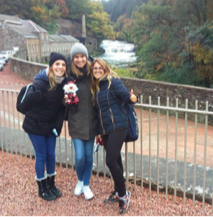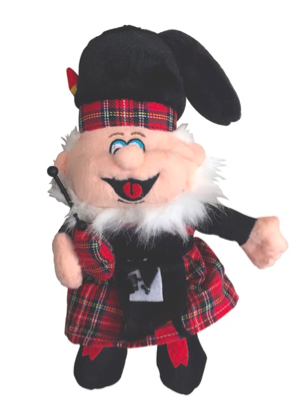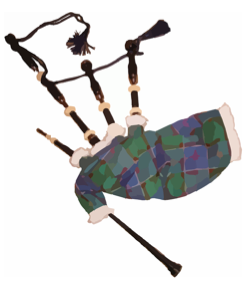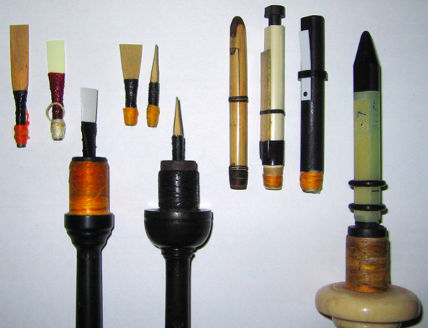If you read our last article, then you’ll know that the Scottish kilt, the “skirt” that is worn as part of “Highland Dress” is actually the invention of an Englishman! Don’t tell Scottie – our Schools’ mascot! However, we did promise that we’d tell you a bit more about Scottie’s kilt and, in particular, about his bagpipes.
Scottie’s kilt is made of one of the most famous and best-known tartans, called Royal Stewart. However, there are, literally, hundreds, if not thousands, of other tartans. Mostly, they are associated with a Clan (a family grouping) and referred to by the surname of the Clan, such as the Stewarts, MacDonalds or Campbells. Tartan cloth is now famous worldwide and often used in the fashion industry to make attractive clothes (not just kilts but trousers, jackets and hats) for both men and women. Here are some examples of tartans. From the left, they are: MacLeod, Royal Stewart and Black Watch. The Black Watch is a very famous Scottish army regiment. All the Scottish regiments wear kilts in their own, often very distinctive, tartans.
Another thing that amazes many people about the kilt is just how much material is required to make one. If you look at the kilt more closely, you can see that the material is pleated, which means it is folded together so that the cloth forms ‘pleats’ which overlap each other. This means there is a lot of cloth used: eight yards (over seven metres) for each kilt. This makes the kilt very heavy to wear. The cloth is made from wool, woven into the tartan patterns.
As well as wearing his kilt, Scottie loves playing the bagpipes. There are many different forms of bagpipes all over the world, from Malta to India, but the Highland bagpipe is probably the largest and best known. If you come to study with us here in Scotland, in either our Glasgow or Edinburgh Schools, you’ll often hear and see bagpipers playing in the streets for the tourists (especially in Edinburgh).
The bagpipes consist of a bag, traditionally of leather but now often of artificial material, with three long ‘drones’ that come out of the top of the bag and make the background ‘droning’ sound; a ‘chanter’, which is the stick that hangs below the bag and on which the notes are played; and a ‘blowstick’, which is in front of the drones and is for blowing air into the bag. By keeping the air in the bag at a constant pressure (by a mixture of blowing into the bag and squeezing the bag with the left arm), the piper is able to regulate the pressure of air passing over the reeds in the drones and chanter and these are what create the noise – the droning background from the drones and the actual notes from the chanter. The picture below shows a selection of reeds: the ones on the left are for the chanter and the ones on the right are for the drones.
There are only thirteen notes on the chanter, from C to a high A, but from these thirteen come some memorable and stirring music, which often shows the origins of the Highland bagpipe as a instrument used in battle.
 Interestingly, until 1996, the Highland bagpipe was legally regarded as an instrument of war in the UK – a weapon in other words. This was because the Highlanders were often led into battle by a bagpiper. There are many famous stories of very brave pipers leading soldiers into battle, one of whom won the Victoria Cross – Great Britain’s highest award for bravery – as a result of his actions. You can read more about the bagpipes’ military role at this link.
Interestingly, until 1996, the Highland bagpipe was legally regarded as an instrument of war in the UK – a weapon in other words. This was because the Highlanders were often led into battle by a bagpiper. There are many famous stories of very brave pipers leading soldiers into battle, one of whom won the Victoria Cross – Great Britain’s highest award for bravery – as a result of his actions. You can read more about the bagpipes’ military role at this link.
We’re not sure if Scottie is brave enough to win any medals, but we do know that he’s very popular with our students, who often take him with them on their trips to see popular landmarks, museums and buildings in Scotland




 Glasgow School of English.
Glasgow School of English.